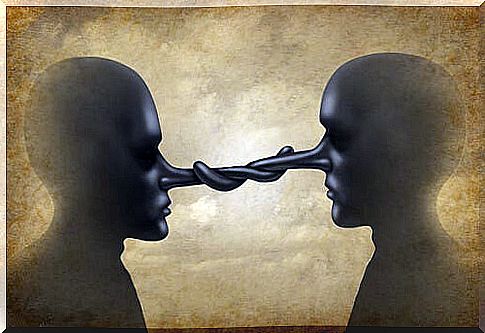3 Body Informers Of Lies

Clearly the simulation, deceit and lies are part of human nature and are present in both personal life and social life. Human forms of communication are supported by a role play where what the person is with what he appears to be, reality with the image, the role of author with that of actor is intermingled.
There are two fundamental ways to lie. One, hiding and withholding information, without actually saying anything that is untrue. Another, falsifying, not only withholding true information, but presenting false information as if it were true. The advantages of concealment can range from purposefulness to manipulation.
Body indicators of lying
The Psychology of Communication establishes that 50% of the messages emitted or received are non-verbal. Only one part can be controlled voluntarily and these are usually signals that the communicator ignores, but not the one receiving the message.

Through these signals we can know the feelings and attitudes of other people, if they are trying to hide or if there are incongruities between the spoken and unspoken message.
The simulation indicators are used to discover lies and deception. At a scientific level, the following indicators are referred to:
Of the face
Long- lasting facial expressions are often fake. Thus, by thinking more about what is being said – to make it convincing – we overact the facial expression.
As for the smile, it is false when it is not accompanied by the orbicular muscles of the eyelids, covering only the lower part of the face. Finally, regarding blinking, the increase in its frequency validates the emotion that accompanies our words.
Of the body

Body emblems are actions that try to emphasize what is being said and can be voluntarily manipulated, with movements in which one part of the body massages, scratches, grabs or accommodates another part of the body.
There are two ways to determine if an emblem is a slip that reveals hidden information:
- Only a fragment of the emblem is executed and not the entire action, for example: shrug of the shoulders.
- The emblem is executed out of the position of presentation of the individual before the other.
The voice
The most common signs of deception are too long or frequent pauses, hesitation when starting to speak, errors that do not form words, interjections, repetitions and partial words.
How to detect the lie?
The liar thinks more about what he says and less about his non-verbal communication. Words are easier to control than expressions and micro-expressions of emotion.

There are three main reasons why non-verbal behavior can reveal deception. In summary they are these:
- Lying causes stress, fear, and effort that translate into observable expressions and gestures. Non-verbal cues express emotions of fear or of unwillingness to lie.
- The excessive attempt to control information produces artificial performances with little emotion, few gestures and movements, which reveal an incongruity between verbal and non-verbal language.
- The higher cognitive processes that accompany the act of lying lead to involuntary nonverbal behaviors.
These indicators should be assessed as a whole and within the social and psychological context of the specific situation where they occur, they should not be analyzed in isolation. Nor should lies be sought as if it were an inevitable reality, since mistakes can be made when evaluating simulation and deception.
Not even the most experienced liars have the ability to indefinitely control their unconscious, which will end up giving them away. When the mind doubts, the hand shakes, the same happens with body language, when we feel threatened, the body begins to speak.









